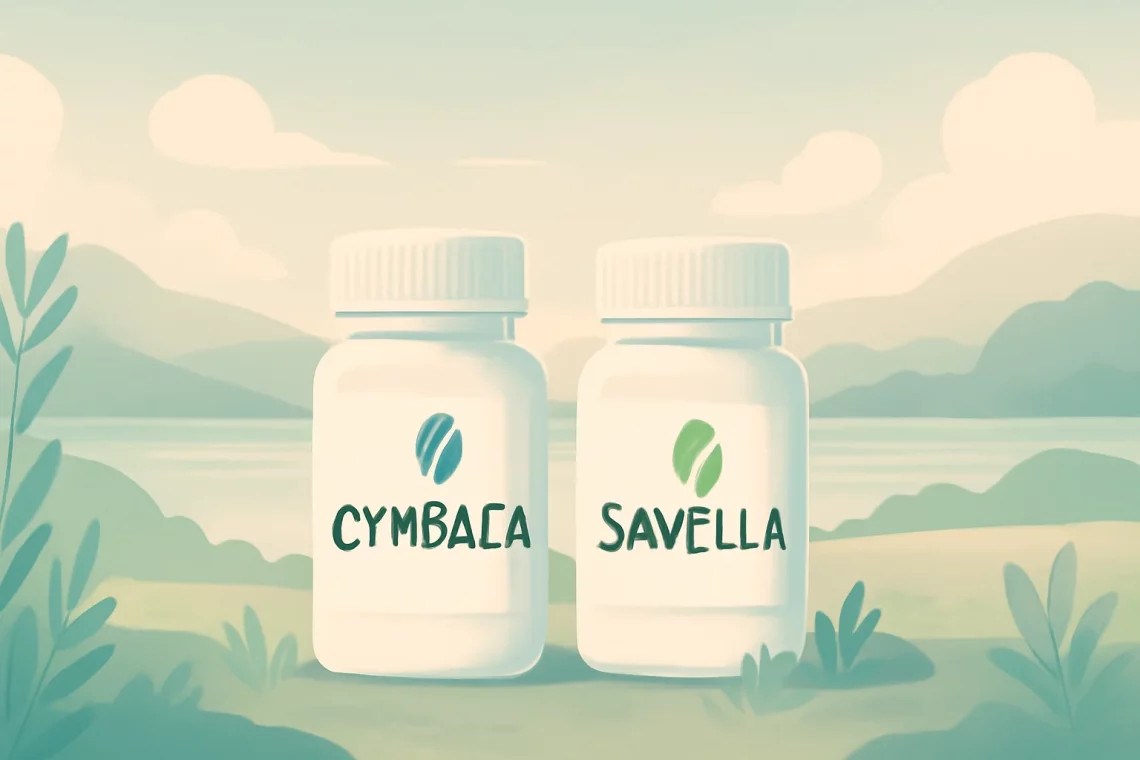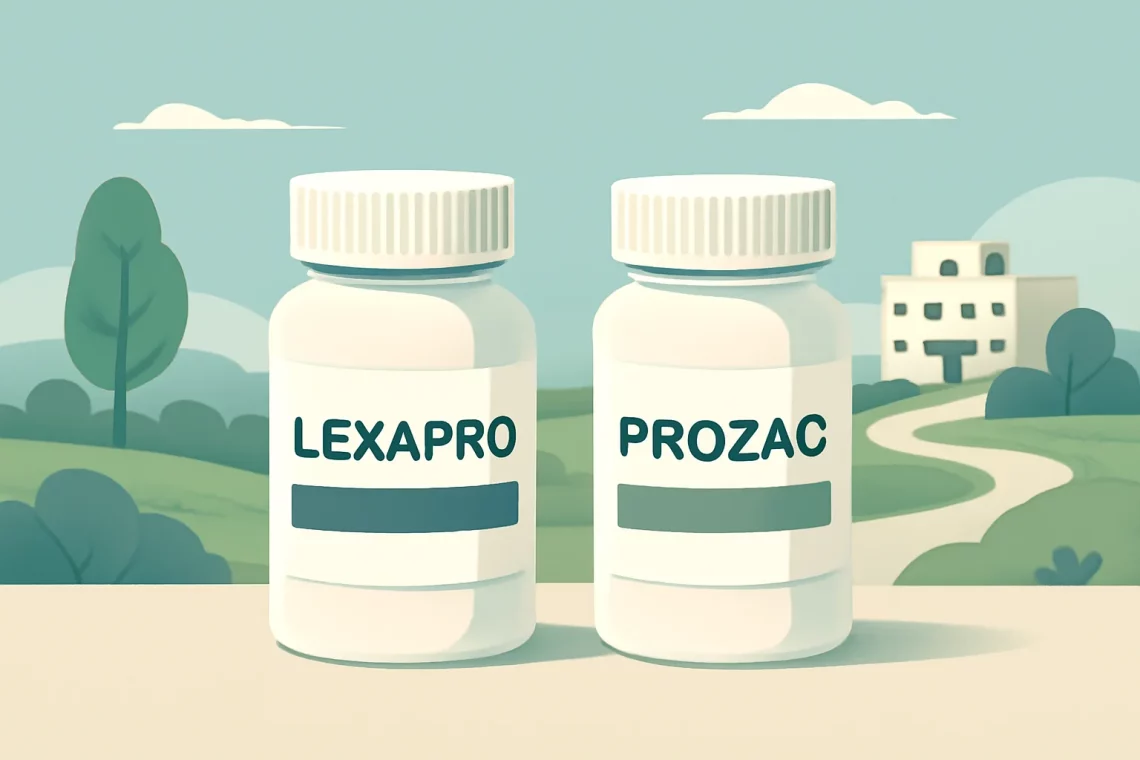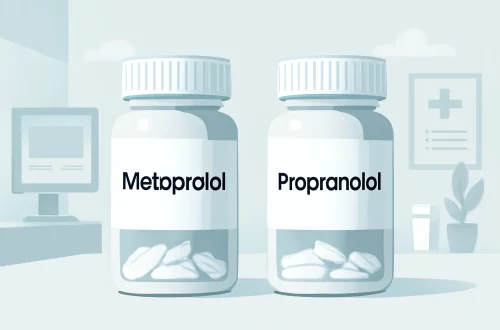-
Cymbalta vs Savella: A Comprehensive Comparison of Two Medications
Cymbalta and Savella are two medications frequently discussed in the context of treating chronic pain and mood disorders. Both belong to a class of drugs known as serotonin-norepinephrine reuptake inhibitors (SNRIs), which are designed to help regulate the levels of serotonin and norepinephrine in the brain. These neurotransmitters play crucial roles in mood regulation and pain perception, making these medications valuable tools in managing conditions such as fibromyalgia, anxiety disorders, and major depressive disorder. Despite their similar mechanisms of action, Cymbalta and Savella are prescribed for different indications and can have varying effects on patients. Understanding the distinctions between these two medications is essential for patients and healthcare providers alike.…
-
Lexapro vs Prozac: A Comprehensive Comparison of Two Antidepressants
Depression and anxiety are two of the most common mental health disorders affecting millions of individuals worldwide. As awareness of mental health issues has grown, so too has the range of treatment options available. Among these options, selective serotonin reuptake inhibitors (SSRIs) have gained prominence for their efficacy in treating depression and anxiety-related disorders. Lexapro and Prozac are two of the most well-known SSRIs prescribed by healthcare professionals. While both medications aim to balance serotonin levels in the brain, their formulations and specific uses can vary significantly. Understanding the differences between Lexapro and Prozac is crucial for patients seeking effective treatment for mental health issues. Factors such as side effects,…
-
Cephalexin vs Doxycycline: Key Differences and Uses Explained
Cephalexin and doxycycline are both antibiotics that serve critical roles in the treatment of bacterial infections. They belong to different classes of antibiotics, which means they work in distinct ways and target various types of bacteria. Understanding their mechanisms, uses, and potential side effects can help patients make informed decisions when prescribed these medications. Antibiotics have been a cornerstone of modern medicine, providing essential treatments for infections that could otherwise be life-threatening. However, their effectiveness can depend on the specific type of bacteria causing the infection, as well as patient-specific factors such as age, health status, and potential drug interactions. This complex interplay highlights the importance of understanding the differences…
-
Januvia vs Glyburide: Which Diabetes Medication is Right for You?
Managing diabetes effectively is a critical aspect of maintaining overall health and well-being for those diagnosed with this chronic condition. The landscape of diabetes medications is diverse, with various options tailored to meet individual needs. Among the prominent medications prescribed are Januvia and Glyburide, both of which serve to regulate blood sugar levels but operate through different mechanisms. Understanding the differences, benefits, and potential drawbacks of these medications can empower patients and caregivers to make informed decisions about diabetes management. As diabetes continues to rise globally, it is essential for patients to familiarize themselves with the various treatments available. The choice between medications like Januvia and Glyburide can significantly influence…
-
Citalopram vs Paxil: Understanding the Key Differences and Uses
Citalopram and Paxil are two medications frequently discussed in the context of mental health treatment, particularly for conditions such as depression and anxiety disorders. Both belong to a class of drugs known as selective serotonin reuptake inhibitors (SSRIs), which are designed to increase serotonin levels in the brain. This enhancement of serotonin activity is thought to improve mood and emotional balance. The choice between citalopram and Paxil often raises questions among patients and healthcare professionals alike, as each drug has its own unique profile of benefits and potential side effects. While both medications aim to alleviate symptoms of mental health disorders, they can differ significantly in their effectiveness, tolerability, and…
-
Cyclobenzaprine vs Skelaxin: Comparing Muscle Relaxants for Pain Relief
Cyclobenzaprine and Skelaxin are both widely used medications in the realm of muscle relaxants. These medications play a crucial role in alleviating muscle spasms and discomfort, often resulting from injuries, overexertion, or conditions such as fibromyalgia. Understanding the differences, benefits, and potential side effects of these drugs is essential for patients considering their use. The choice between Cyclobenzaprine and Skelaxin can significantly influence treatment outcomes, as each medication has its unique properties and indications. As muscle relaxants, they act on the central nervous system to reduce muscle tension and enhance mobility, which can be particularly beneficial in rehabilitation settings. Both medications have their advocates and specific circumstances under which they…
-
Clonazepam vs Diazepam: Key Differences and Uses Explained
Clonazepam and diazepam are two medications belonging to the benzodiazepine class, widely used for their anxiolytic, anticonvulsant, and muscle relaxant properties. Both drugs have been prescribed for various conditions, including anxiety disorders, panic attacks, and seizures. Their effectiveness and the specific situations they are prescribed for can vary widely, making it crucial to understand their unique characteristics, benefits, and potential side effects. As mental health awareness grows, understanding the differences between these medications becomes increasingly important for patients and healthcare providers alike. While both clonazepam and diazepam serve similar purposes, they also have distinct pharmacological profiles, which can influence treatment decisions. The choice between clonazepam and diazepam often depends on…
-
Diclofenac vs Meloxicam: Which Pain Reliever Is Right for You?
Diclofenac and meloxicam are two commonly used non-steroidal anti-inflammatory drugs (NSAIDs) that play a significant role in managing pain and inflammation. These medications are often prescribed for conditions such as arthritis, muscle pain, and various forms of acute pain. While both diclofenac and meloxicam share similar mechanisms of action—primarily inhibiting cyclooxygenase enzymes to reduce the production of prostaglandins—they differ in various aspects, including their pharmacokinetics, usage, and side effects. Choosing between these two medications can be challenging, especially for patients who are looking for effective pain relief without compromising their health. Understanding the distinctions and similarities can empower patients and healthcare providers to make informed decisions tailored to individual needs.…
-
Vraylar vs Latuda: A Comprehensive Comparison of Two Antipsychotics
Vraylar and Latuda are two medications that are commonly prescribed for the treatment of psychiatric disorders, particularly schizophrenia and bipolar disorder. Both drugs belong to a class of medications known as atypical antipsychotics, which are designed to manage symptoms such as hallucinations, delusions, and mood swings. While they share similar mechanisms of action, they also have unique properties that differentiate them in terms of efficacy, side effects, and patient experience. In recent years, the understanding and treatment of mental health conditions have evolved, leading to the development of newer medications that aim to improve patients’ quality of life. Choosing the right medication is crucial for effective treatment and can significantly…
-
Diazepam vs Clonazepam: Which Medication Is Right for You?
In the realm of mental health and pharmacology, few medications have garnered as much attention as benzodiazepines, particularly Diazepam and Clonazepam. These drugs are widely used for their anxiolytic, anticonvulsant, and muscle relaxant properties. Both have carved out significant roles in treating various disorders, including anxiety, panic attacks, and certain types of seizures. However, their differences in mechanism, efficacy, and side effects can often lead to confusion for patients and healthcare providers alike. Understanding these differences is crucial for making informed decisions about treatment options. As the conversation around mental health continues to evolve, the importance of choosing the right medication has become more pronounced. Patients often find themselves navigating…






































